8 Books About Japanese Culture to Read Before the Tokyo Olympics
It was love at first visit. From the first moment I stepped into the brilliant bustle of Tokyo, Japan, I was captivated by its beautiful design aesthetic, so many charming people, delicious food everywhere, and a cultural dedication to excellence in every detail. My affection has grown deeper over time, especially as I’ve begun to sense the many complex and compelling stories about family, identity, social constructs, and history simmering beneath Tokyo’s streets and alleys.
Since that first visit, I’ve seized every opportunity to return to Tokyo. In fact, I’d planned to attend the 2020 Summer Olympics. The pandemic, of course, had other ideas. So, I decided to do the next best thing: immerse myself in books about Japanese culture before, during, and after the Games. After all, what better way to get lost in a country than through the perspectives of other people who feel the same love for it that I do, including many #OwnVoices authors?
I reached out to my lifelong friend and fellow book lover, Debbie Rowland, a Japanese American who, in addition to being born in and spending summers in Japan as a child, lived in Tokyo as an adult for 15 years. Rowland shared this list of books about Japanese culture she recommends to everyone who’s planning a visit to Japan — a collection she’s curated after working, playing, and traveling all over the country. For each book, I asked her to offer a perspective on how the title captures Japan’s unique culture.
So, while you’re getting ready to cheer on your favorite athletes as they compete in Tokyo, check out these fiction and nonfiction books about Japanese culture.
Fiction Books About Japanese Culture

Convenience Store Woman by Sayaka Murata, Translated by Ginny Tapley Takemori
When Keiko Furukura was growing up, she always felt like a misfit — even in her own family. But when the Tokyo resident takes a job at the Smile Mart convenience store, she finally feels at home. For the first time, she understands the “rules” of social interaction — which also happen to be explained in the store manual. She becomes an expert at dressing, acting, and speaking like her coworkers. By the time she’s 36, she’s been working happily at the store for 18 years. But now that her family and coworkers are pressuring her to get married and start a proper career, Keiko finds herself trapped between staying with what she loves and trying to meet others’ expectations.
Rowland’s Take on Convenience Store Woman: “The convenience store is a surprisingly significant part of Japanese culture,” Rowland told me. She explained that it’s often “the first and last place a traveler to Japan will visit, and visitors and residents alike will find themselves in a convenience store every day without even trying.” After visiting Japan a few times myself, I can attest that I’d gone to my first convenience store before I’d even left the airport and did indeed find myself in one several times each day while I was there.
Rowland also told me that the author nails the atmosphere of a Japanese convenience store in the first few pages, which Rowland recommends reading before your first visit to know what to look for, then again afterward to see if the experience lived up to your expectations. The rest of the novel, she says, offers “a feel for work culture and the pressures of conformity in modern Japan”
The Makioka Sisters by Junichiro Tanizaki
For years, the Makioka family name was renowned for its wealth and power in Osaka, Japan. But in the period leading up to World War II, the family is falling into financial and social decline. Because Tsuruko, the eldest of four sisters, has moved to Tokyo with her husband, the other three sisters live together with Sachiko, the third sister. Sachiko would do anything to secure the futures of obedient Yukiko, who’s waiting for a suitable arranged marriage, and rebellious Taeko, who takes up with a paramour and dreams of a life in France. Their struggle to hang on to an aristocratic status that’s becoming increasingly obsolete creates challenges and complications in all of the sisters’ lives.
Rowland’s Take on The Makioka Sisters: Rowland is sure that readers will want to step into the pages and join the Makioka family on a spring outing to witness “the fleeting beauty of the cherry blossoms.” She told me that Tanizaki’s descriptions of street scenes, festivals, and nature in Kyoto and Osaka are still relevant today. That said, Rowland also enjoyed this title specifically for its depiction of daily life in pre-war Japan.
Pachinko by Min Jin Lee
When Sunja falls in love with a wealthy, sophisticated stranger on the Korean seashore at the beginning of the 20th century, she gets swept up in his grand promises to her. But when she discovers she’s pregnant and that her lover is married, Sunja rejects his offers and instead marries a minister who’s passing through on his way to Japan. She follows her new husband to Osaka and soon finds out what it’s like to live as a Korean immigrant in Japan, with its complex challenges around opposing cultures, disparity in social class, and familial expectations — a life she passes on to future generations.
Rowland’s Take on Pachinko: “Learning about the struggles of Koreans in Japan and the underground world of pachinko parlors was eye-opening,” Rowland says. She recommends this title as a peek into a more unconventional side of Japan.
Snow Country by Yasunari Kawabata, Translated by Edward G. Seidensticker
Wealthy, married Tokyo resident, Shimamura, is a frequent visitor to a remote hot spring (onsen) on Japan’s snowy west coast. On one of his visits, Shimamura meets Komako, a young geisha, and begins to fall for her, despite the rule against geishas getting emotionally attached to their clients. While Shimamura’s devotion to Komako is inconsistent, Komako commits fully to Shimamura, revealing the most private parts of her life to him. The lovers, fully aware that their affair is ill-fated, choose to continue their romance and live with whatever consequences may arise.
Rowland’s Take on Snow Country: Rowland describes this novel as “the perfect companion for a local train ride in the snow country along the Sea of Japan.” Not quite on your itinerary yet? Rowland still recommends reading this title for its accurate representation of “love, isolation, and loneliness from a Japanese perspective.”
A Tale for the Time Being by Ruth Ozeki
While working on her memoir in British Columbia, a novelist named Ruth struggles with writer’s block — until she finds a mysterious Hello Kitty lunchbox washed up on the shore by the 2011 tsunami in Japan. When she opens the box, she discovers the journal of Nao, a teenage girl in Tokyo. Intensely lonely, the 16-year-old has written about plans to take her own life — but not before documenting the life of her great grandmother, a Buddhist nun. Ruth, feeling compelled to dig deeper before time runs out for Nao, sets out on a quest to find answers for the mysterious teenager — and somewhere along the way, Ruth begins to understand herself better, too.
Rowland’s Take on A Tale for the Time Being: If you’re interested in learning about Japanese culture and modern history, including World War II, the 2011 earthquake and tsunami, religion, family, and schools, Rowland recommends this title as a more accessible alternative to nonfiction books about Japanese history. “[T]his story,” she says, “is an easier way to familiarize yourself with some unique aspects of Japanese life.”
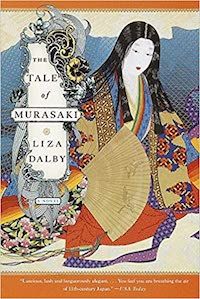
The Tale of Murasaki by Liza Dalby
Penned by a Westerner who worked in a geisha house, The Tale of Murasaki is Liza Dalby’s imagined account of the life of 11th century poet Murasaki Shikibu, who wrote the ancient novel The Tale of Genji. In Dalby’s book, Murasaki is a child who writes stories about a handsome prince named Genji while dreaming of becoming a lady-in-waiting for the empress. After childhood, her life gets more complicated, but Murasaki never stops writing. Her diligence pays off when her stories eventually capture the attention of the empress and she’s finally able to live out her dreams.
Rowland’s Take on The Tale of Murasaki: This is a story, Rowland predicts, you’ll be daydreaming about while walking through the temples and shrines of Kyoto. “Not only is it a great story, ” she told me, “but Liza Dalby’s The Tale of Murasaki, set in 11th century Japan, will give some history and context to the historical sites visitors will encounter.”
Nonfiction Books About Japanese Culture
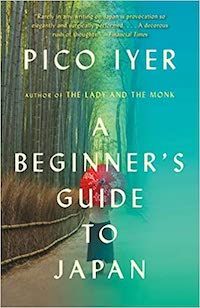
A Beginner’s Guide to Japan by Pico Iyer
After living in Japan for more than three decades, travel writer Pico Iyer offers readers a glimpse of the country’s culture through his own experiences. Iyer reflects on his travels, interactions, and readings and then shares his insights through anecdotes and observations aimed to capture Japan’s distinctive spirit.
Rowland’s Take on A Beginner’s Guide to Japan: If you’re looking for a book to read on your flight to Japan, Rowland recommends this one: “You can easily get through this collection of brief reflections and anecdotes.” She herself relates to Iyer’s observations and thoughts on Japan and Japanese culture. “His perspective as an experienced travel writer and longtime resident of Japan is unique and trustworthy.”
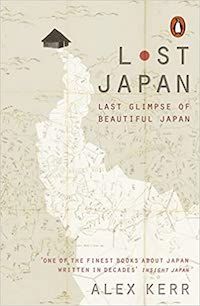
Lost Japan: Last Glimpse of Beautiful Japan by Alex Kerr
In this tribute to Japan, Alex Kerr rhapsodizes about the country he got to know and love during 30+ years of living there. He describes his experience with Kabuki culture, pulls the curtain back on boardrooms in Tokyo, and reveals the story behind the hidden valley he called home. Kerr also mourns the loss of culture and natural beauty he believes is slowly vanishing.
Rowland’s Take on A Beginner’s Guide to Japan: This author’s “love of Japanese culture and tradition is apparent,” Rowland says, but adds that if you’re not quite ready to embrace some “negative aspects of modern Japan” before your first visit, then save this book until after you’ve returned home.
While it will never be quite the same as an in-person visit, digging into these books’ perspectives on Japan will at least give you a sense of the one-of-a-kind place the whole world will be talking about during the upcoming Olympic Games. Even Rowland, who only moved back to the U.S. last December, expressed to me that reflecting on these titles already made her “want to reread all [of them] and take a trip to Japan as soon as possible.”
If you’re looking for even more books about Japan, start with these Book Riot recommendations.

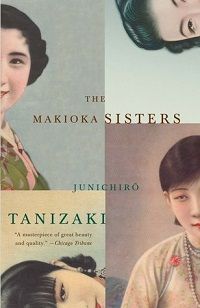

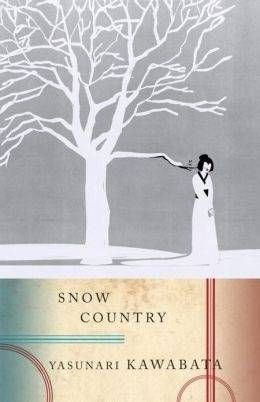
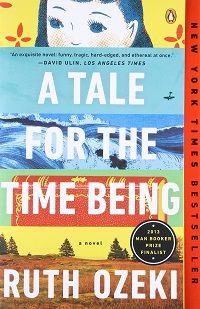
إرسال تعليق
0 تعليقات